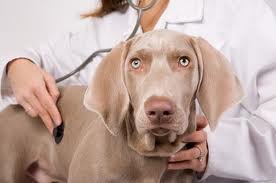Canine lupus is a rare autoimmune disease in which antibodies attack the body’s tissues. There are two main types of lupus: systemic lupus erythematosus (SLE) and discoid lupus erythematosus (DLE). Lupus can be genetic, but it can also be caused by infections, medications and environmental factors. DLE affects mainly the skin, while SLE is more serious in nature and affects the joints, heart, kidney and liver as well.
Symptoms
The symptoms of canine lupus vary depending on the type of lupus. DLE affects the skin on the dog’s face, lips and bridge of the nose. It causes depigmentation, itchiness, redness, flakiness, scars, ulcers and skin crusting. You may notice your dog scratching at the affected areas. It can be painful. This type of lupus is often acute, going into remission after period of time.
SLE is more serious than DLE. The body attacks itself and causes a variety of symptoms in any part of the body. Lameness in the legs that seems to shift from one leg to another is the most common sign. Stiffness, arthritis, lethargy, bleeding problems, lack of appetite and depression can also occur. Pale gums, hair loss, thickened foot pads, increased thirst, fever and atrophy of the muscles are all signs of SLE. The lymph nodes, spleen and liver may also become enlarged.
Breeds of dogs at risk
DLE is common in some breeds of dogs to include German Shorthair Pointers, Collies, Shetland Sheepdogs, German Shepherds, Brittany Spaniels, Chow Chows, Siberian Huskies and Alaskan Malamutes.
SLE is most common in German Shepherds, but can also occur in the following breeds: Beagles, Poodles, Irish Setters, Afghan Hounds, Collies, Old English Sheepdogs and Shetland Sheepdogs.
Diagnosis
DLE is easier to diagnose than SLE because its effects are mostly visible. Skin biopsies may be done to diagnose DLE, but no further tests would be needed. It takes more than one test to diagnose SLE. A vet may order a variety of tests, including a skin test, urinalysis, blood work and an antinuclear antibody test, in order to rule out other medical conditions. An arthrocentesis, a test that samples joint fluid, may be used. X-rays may be performed in order to rule out arthritis. It is important to rule out any sign of infection before starting medication.
Treatment
DLE cannot be cured, but the symptoms can be treated. Antibiotics, lotions, ointments, corticosteroids and vitamins may be prescribed. Dog owners looking for natural remedies for their dog can find some information from the Natural Dog Health Remedies website. Sunscreen can be applied to the dog’s face to reduce the risk of lesions and scarring. Dogs with DLE should be kept out of the sun as much as possible, as sunlight worsens the symptoms. They should see a vet regularly to monitor the disease. Because the disease is not life-threatening, the prognosis is very good. However, dogs with DLE should not be bred.
SLE also cannot be cured, so the focus is on treating the symptoms and preventing the disease from progressing. The disease is treated aggressively because it affects important organs and body systems, causing infections to occur. Corticosteroids and non-steroidal anti-inflammatory drugs are commonly used, but not used together, since it increases the risk of ulcers. Dogs with a severe form of lupus may need to be hospitalized until their condition stabilizes.
SLE must be managed for the rest of the dog’s life, unless the disease goes into remission. Rest and dietary restrictions may be needed. Dogs should see a vet regularly for follow-up tests. Chemotherapy should be discussed with your vet. It is the only effective form of long-term treatment available, but it comes with serious side effects. There are no surgical options currently available. Unfortunately, because SLE can be debilitating, the prognosis is poor.
